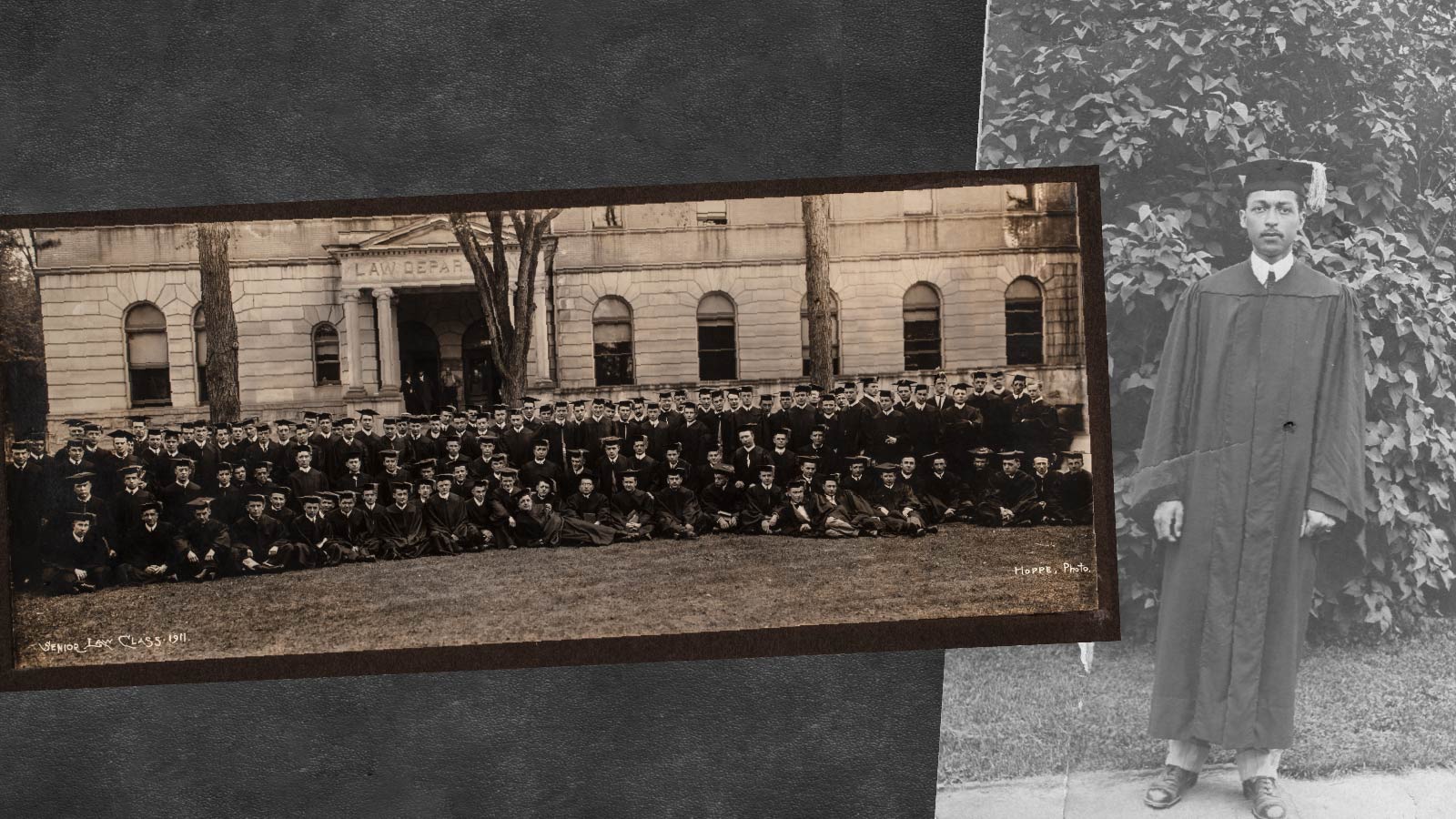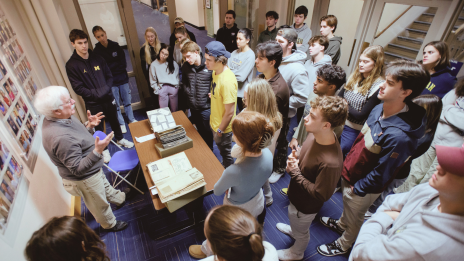By Anissa Gabbara | Art by Dyanna Bateman
To art historian Dr. Sharon F. Patton, family photos aren’t merely memorabilia; they’re testaments to remarkable people who have remarkable stories
Delving into her family’s genealogy roughly a decade ago, Patton became reacquainted with the scrapbook her late grandfather, Richard Hill Jr. (JD 1911), kept from his days as a Wolverine. It contained images of Hill’s Law School class, as well as campus events and athletic activities. It also had candid photos of himself and his peers relishing student life at 1017 Catherine Street—the Alpha Phi Alpha house (the oldest intercollegiate African American fraternity) where he resided—and the first place Patton looked for when she arrived in Ann Arbor in 1991 as a faculty member, only to discover that the house no longer existed.
It was then when Patton, former associate professor in the History of Art Department and the Center for Afroamerican and African Studies, realized how much her grandfather cherished his time at Michigan—something he never spoke to her about when he was alive. She also recognized the need for institutions like U‑M to preserve the legacy of Black alumni who contributed not only to the university’s 200-year history, but to the world.
Lost history finds a new home
After having this epiphany, Patton hired a digital photographer to restore these treasured images. In the spring of 2022, she reached out to U‑M’s Bentley Historical Library in hopes of donating the photos, sharing digitized versions with assistant director and archivist Brian Williams (MILS ’90 ). Turns out, Williams was spearheading the African American Student Project (AASP) in the mighty effort to document the names of every Black student who attended U‑M between 1853 and 1970.
Launched in 2016 in anticipation of the university’s bicentennial, the AASP aims to provide more data about the Black student experience at Michigan during that time period.
“The university didn't officially track students' race prior to 1970, so it took a lot of investigation to identify who those students were and to tell their stories,” said Bentley Director Alexis Antracoli (MSI ’11).
The database collects a wide range of student information, including local addresses, hometowns, degrees, fields of study, and years of attendance. It also holds hidden narratives that represent the diverse experiences of Black students on campus—from the harsh realities of segregation and discrimination to their long string of legacy and achievements. Plus, the website offers ways to visualize, map, and chart their history at Michigan.
Met with great interest and enthusiasm from Williams and other Bentley staff, Patton parted ways with her grandfather’s beloved photos, but not without knowing they’d be in good hands. Thanks to her generosity, the Bentley now boasts the earliest known photos of Black fraternity life at U‑M, serving as a significant source of pride and history for generations to come. Additionally, Patton recently made a gift to the Bentley’s Digital Strategic Fund to support the digitization and conservation of materials related to Black student life at U‑M.
“Digital access is so vital for scholars and anyone interested in Black history,” she said. “As a historian and an African American woman, I cannot ignore or dismiss the relevance of leaving these photographs for posterity. Digital records ensure their survival.”
Name by name
Building a collection as elaborate as the AASP isn’t for the faint of heart. Today, the database holds more than 6,000 names of Black students who attended U‑M over the course of 117 years, and is currently expanding to include the 1970s. Having started the project with little information, Williams remembers doing a great deal of detective work—sifting through records, scouring books, and searching online for addresses and mentions of fraternities and sororities as he and his team searched for names.
“The goal was to create a searchable database that researchers could use,” Williams said. “First, we looked through yearbooks, and if anybody appeared to be African American, we would try and verify that in census data. We searched issues of The Crisis magazine. We also pulled names from the NAACP’s annual educational issues where they list graduates, and found directory volumes like Who's Who in Colored America.”
A tedious but worthwhile process, rigorous research pointed Bentley staff to some notable, but not well-known individuals who attended the university. For example, John Kitzmiller, of Battle Creek, Mich., attended the College of Engineering in the 1930s, but he ended up enlisting in the Army in World War II—serving in Italy—and eventually became a huge movie star in Europe with some success in the states. (James Bond fans may know him as “Quarrel.”)
Oscar Baker, of Bay City, Mich., attended the Law School in the early 1900s and helped pave the way for racial integration of U‑M dormitories by taking on the case of Marjorie Franklin, a Black female nursing student who was denied access to live in the Couzens Residence Hall in the 1920s. Coming close to litigation, the university finally conceded and allowed Franklin to live in the dormitory.
An infinite investment
As the database continues to grow, having dedicated donors by the Bentley’s side to ensure that Black student history at U‑M never goes under the radar again is crucial.
“Donors are definitely key to sustaining this project, maintaining the website, maintaining this research. It takes a lot of manpower and time and cost to run this project for as long as we have,” Williams said.
“This work requires funds for staff, for digitization, and for equipment, so we’re grateful to have people who are invested and are financially willing to support the project,” Antracoli added.
Patton knows from experience that institutions thrive on donor support, and that the continuation of projects like the AASP may not be possible without it. After generously donating to the AASP, she said her hope is that others will review old family photos and know that with the power of digital technology, they can leave behind a legacy that’s greater than themselves.
“We often forget that there is a backstory to the success of institutions and projects; they need money to survive,” she said. “If we want to provide digital access to the trove of archival material at the Bentley, we need to do our best to ensure that the stories and histories they hold are easily accessible and will be preserved for future generations.”




